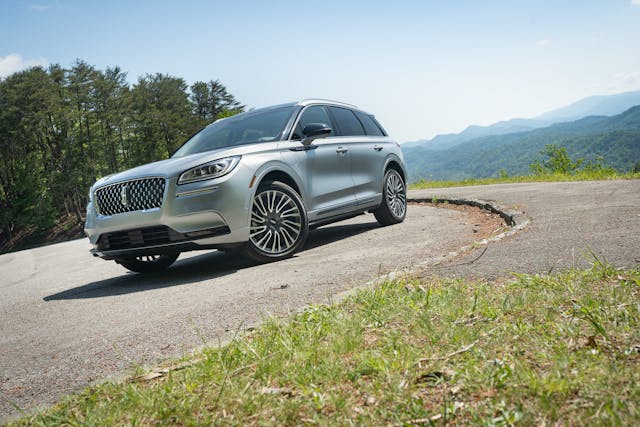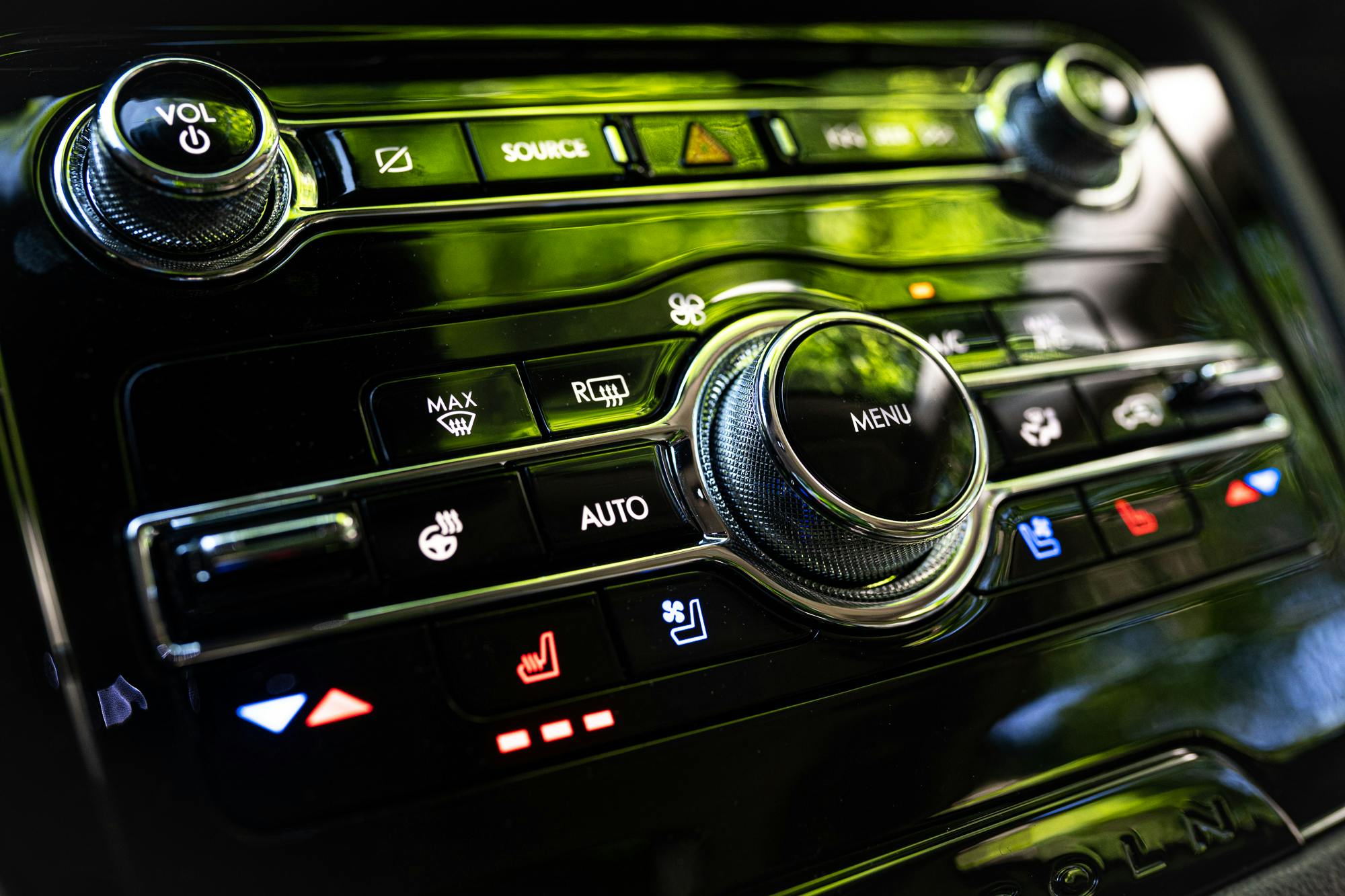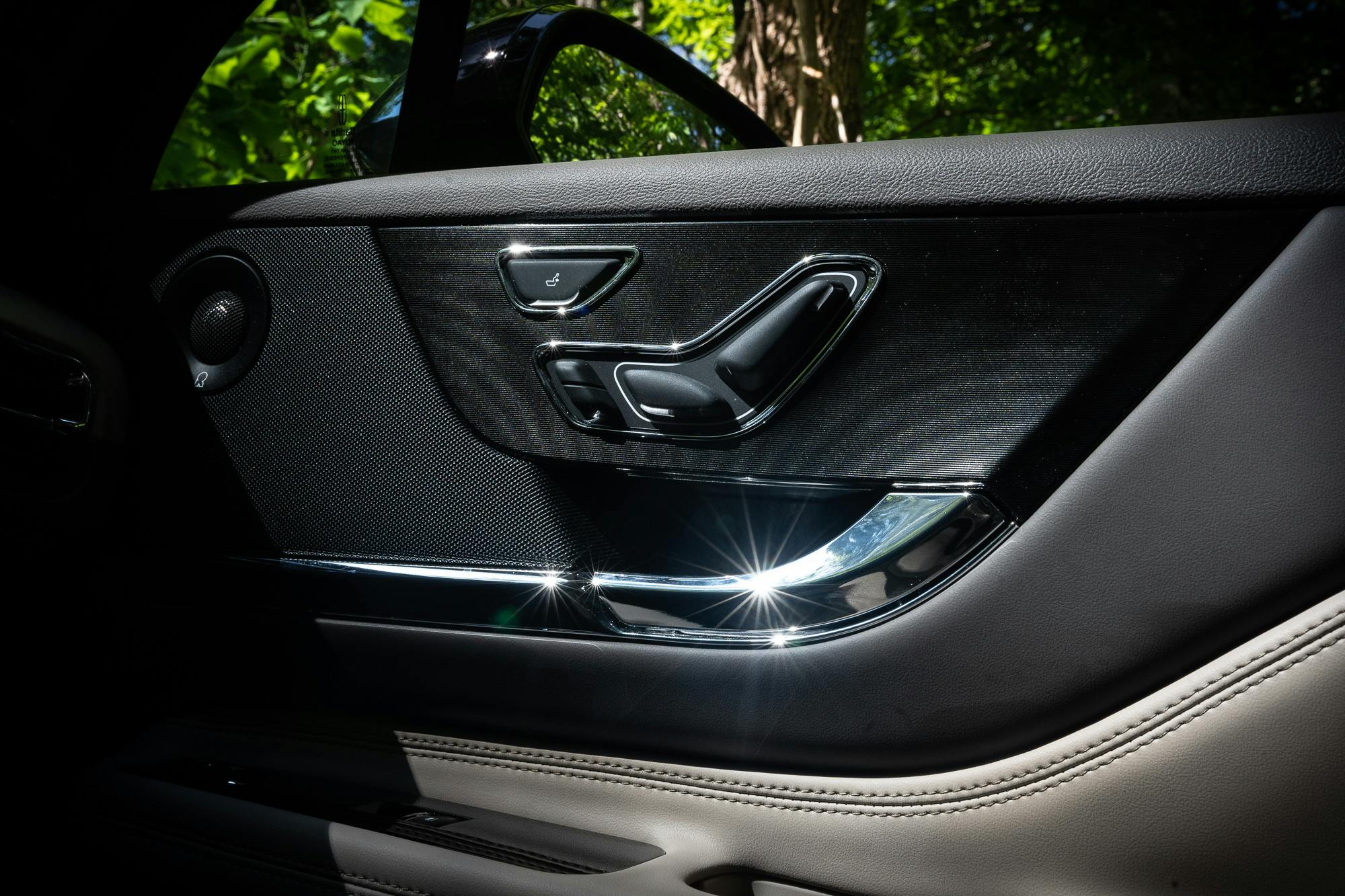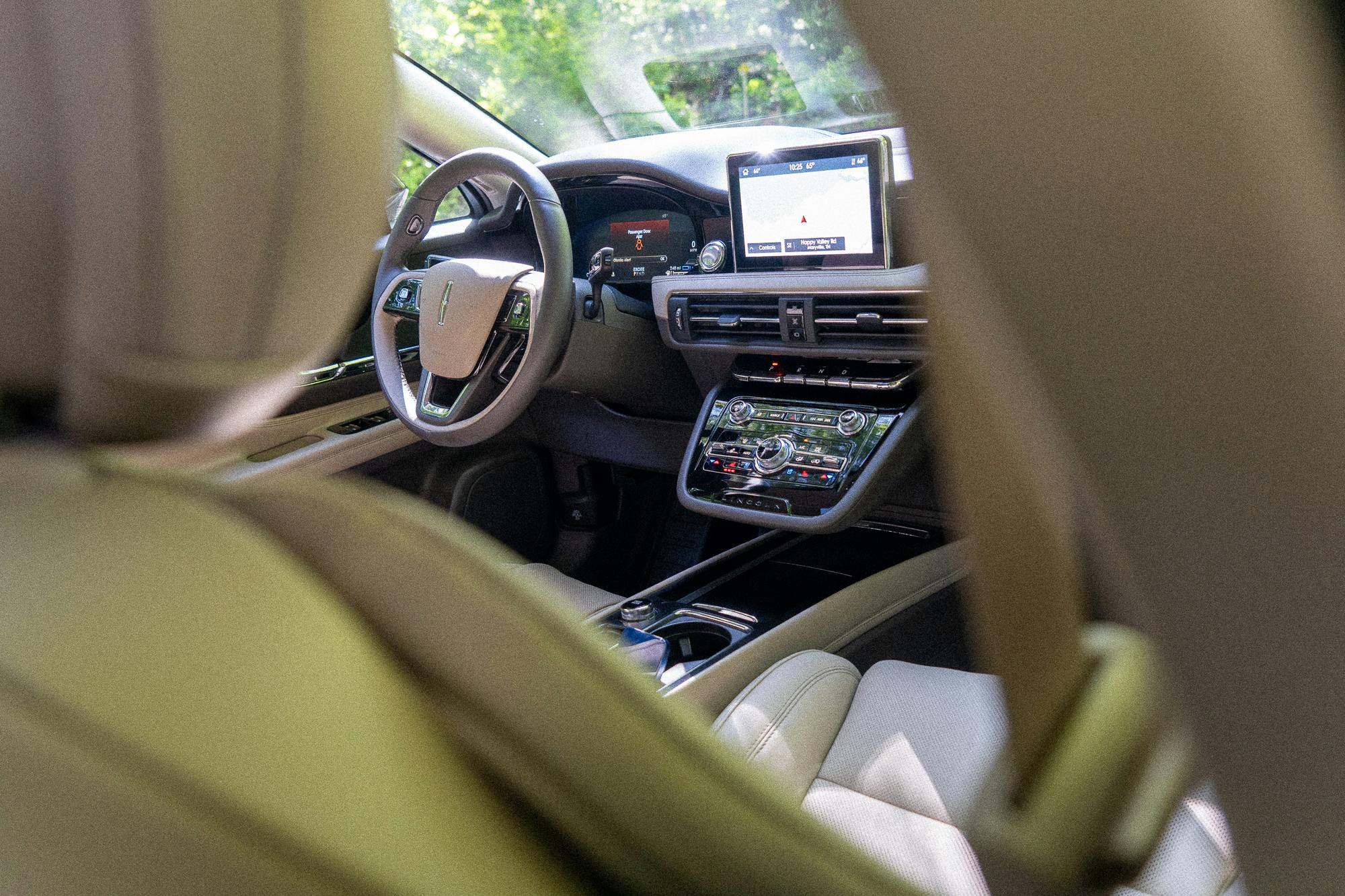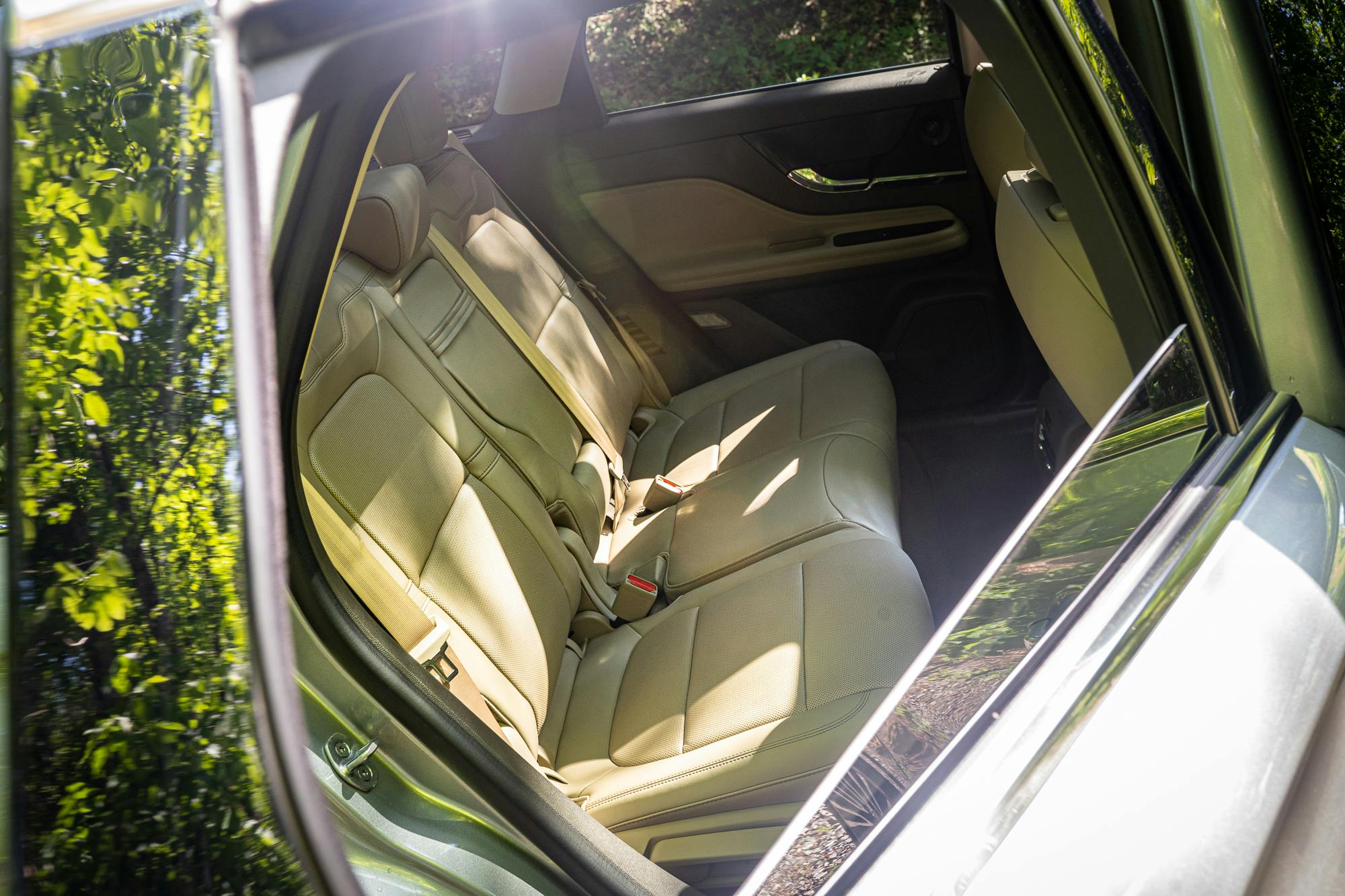Review: 2021 Lincoln Corsair Plug-in Hybrid
My wife looked at me funny. She often does, not least because your narrator is broken in a dozen ways. In this case, however, it was a car.
“Is that a Lincoln in the driveway?”
“Yes,” I said. “You like it?”
Blank stare. “Looks like everything else. What is it?”
“The plug-in-hybrid Corsair.”
“People actually buy those now?”
“Corsairs?”
“No, Lincolns.”
My wife is a copy editor; we met while working at the same car magazine. She has professionally and dispassionately analyzed millions of words on the automotive industry. She occasionally cuts to the quick.
I changed the subject. Mostly, I told her, the Lincoln Corsair Grand Touring AWD PHEV is a machine of the moment. For better and worse.
She shrugged. A gesture that, in retrospect, fits both the Lincoln and much of our collective social moment.
I digress. This is a 4600-pound, 266-hp hatchback wagon that shares a platform with the Ford Escape. It is an entry-luxury product. A vehicle from a grand old name in American motoring. Lincoln calls the Corsair a “perfect balance of elegance and agility,” a phrase so ambiguous, it could work on a Bugatti Atlantic or a pair of cross trainers.

The Corsair is powered by a 2.5-liter four-cylinder engine, but also a battery pack and a single electric drive motor for each axle. That equipment brings a 600-pound penalty over a similarly equipped non-hybrid Corsair. Given enough battery charge, the Lincoln’s motors can drive all four wheels on their own, no gasoline. More important, the Corsair was built for the hottest segment in the market. It is one of two Lincoln hybrids currently produced but the only one the industry calls a “compact crossover.”
Some time back, a reader of this site emailed and suggested we do more to clarify jargon. When editors here use the words “compact crossover,” we mean:
1. Most of the downsides (mass, fuel efficiency, drag) of an SUV
2. Most of the downsides (interior space, cargo and tow capacity) of a small car
3. The capability, styling, and satisfaction of neither.
Still, people like these things. Americans buy small crossovers in droves, and for reasons often easily dismantled by logic, but new cars are not a logical space. Most households in this country wouldn’t touch a luxury hatchback with a ten-foot pole, but give that same car another foot of ride height, people climb over each other to sign a lease agreement. In the interest of sanity, we must ask not why everyone is buying slab-sided flab-cars that resemble four-wheeled cows. We should instead ask why they buy a specific version of that cow-flab.
With this Lincoln, the answers are not readily apparent.

At $53,005 for 2022, the plug-in is the most expensive Corsair offered, but it is not the most powerful. The base model ($37,775) gives 250 hp from a 2.0-liter turbo four; for $7575 more, you get the optional 2.3-liter turbo four, at 280 horses. Car and Driver says the plug-in is also the slowest Corsair you can buy, at seven seconds to 60 mph. The others do the job in around six seconds.
The upcharge, then, translates almost entirely to efficiency: The base Corsair, front-drive only, gives 25 combined mpg. The 2.3 notches 25 with a front-drive layout, 24 if you opt for the optional all-wheel-drive system. A hybrid Corsair with a full battery will produce 78 mpg-e; drain the pack and run only the gas engine, that figure drops to 33 combined mpg. Finally, the plug-in receives a continuously variable transmission, or CVT, not the otherwise standard eight-speed automatic.
CVTs have been used in hybrids for years, but their behavior is worth (another) quick digression. The upside of this type of gearbox is a virtually infinite range of drive ratios; the downside, the joke goes, is a virtually infinite range of drive ratios. Early versions of the technology were simply calibrated to follow their strengths: vary transmission output ratio on the fly in order to keep an engine at the rpm where it most efficiently produces the torque the driver wants. (Translated: Engine speed holds constant, car accelerates.)
That was all well and good until people began to complain about the unchanging engine note under load. That sound often presented as a moan, and nobody likes listening to machines moan. In response, some carmakers began tuning CVTs to give “fake” ratios. Which is to say, those gearboxes were programmed to behave more traditionally, mimicking “normal” automatics, with “steps” between simulated “fixed” gears.
That, too, was all well and good, except it hurt efficiency. Which is kind of the point of a CVT. The point of new cars, however, is to sell. The modern approach is generally a blend of the two “shift” practices, often filtered through driver aggression and drive mode. The Corsair hews to this.

Short version: The Lincoln can moan. More to the point, in the cabin, that sound is loud. Conversations and music are occasionally out-shouted by four-cylinder moo.
This reminds your narrator of an old knock-knock joke:
“Knock knock.”
“Who’s there?”
“Interrupting Cow.”
“Interrupting cow wh—”
“MOO!”
I digress again, again. The problem here is the engine’s volume and tone, not the CVT; the gearbox is merely complicit. Perhaps some of us want coarse and shouty noise in a $53,000 vehicle. If vehicle engineering is a series of tradeoff decisions, it is difficult to discern why someone would sign off on this particular choice. Especially with a luxury device. Perhaps it was a grumpy day in Dearborn.
Sadly, the theme carries. The interior is a deeply pleasant place if you don’t look too closely. Those plush seats are fantastic, almost comically supportive and comfy, as in an old Volvo or a Seventies Continental. The toggle-shaped shift buttons carry happy weight for their size; the Drive and Reverse buttons have textured metallic edges so the driver can find them without looking. Most of the switchgear is simple and thoughtfully laid out, and much of it is metal or at least feels as if. The twin-layer glass and Ford Soundscreen windshield help keep perceived road and wind noise surprisingly low; most luxury cars at this price aren’t as isolated. Even the air-conditioning vents have substantial heft.
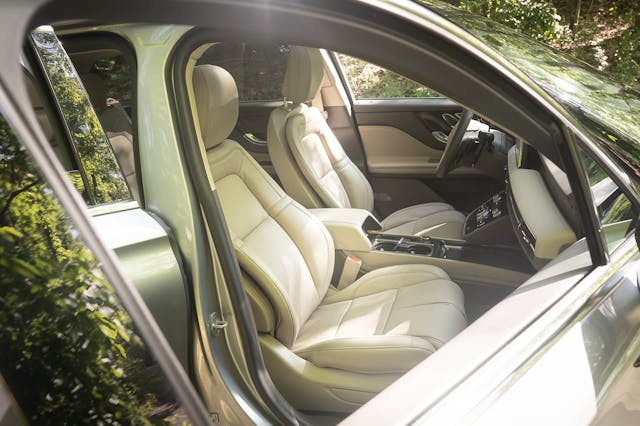
Much of this is current Lincoln SOP—a version of what lives in the base Corsair and the brand’s larger SUVs. Still, it’s better than industry average, and nice. (Hell, most Lexus switches are basically just Toyota Camry bits with a different coating on the buttons.)
If only those hits didn’t seem to emphasize the misses. Sometimes literally. The Corsair’s tomblike interior only makes you think more about the tire slap from those optional 20-inch wheels ($2000, available only on the hybrid). The eight-inch console touchscreen is nice, but eight-inch screens haven’t been a competitive choice for a luxury crossover in more than five years. The software on that screen can be lobotomy-slow when switching menus. The Revel-branded sound system lacks warmth.
Sound trivial? With luxury cars, especially hybrids, perception is everything. And in a $50,000 car—options lifted our test machine to $61,000—this stuff adds up.
This is a machine built for efficiency, so let’s take the most efficient route forward and simply inventory the rest:
The piano-black paint on the dash appears thin and wears noticeable orange peel. (Even Volkswagen gets their piano black more right than this, makes it look more expensive, and on cars costing half as much.)
Being a hybrid, the engine kicks on and off frequently. When it does, the Corsair shudders bodily. (You lose this effect in full EV mode, obviously. But the Lincoln’s EV range is limited to just 28 miles. Go past that, the engine comes moaning back.)
Being a part-time EV, the Lincoln often produces an electric-vehicle warning sound at low speed. With the windows down, that sound can drown out the stereo. (Metaphor alert: The artificial theater of many new cars occasionally overpowers real experience.)
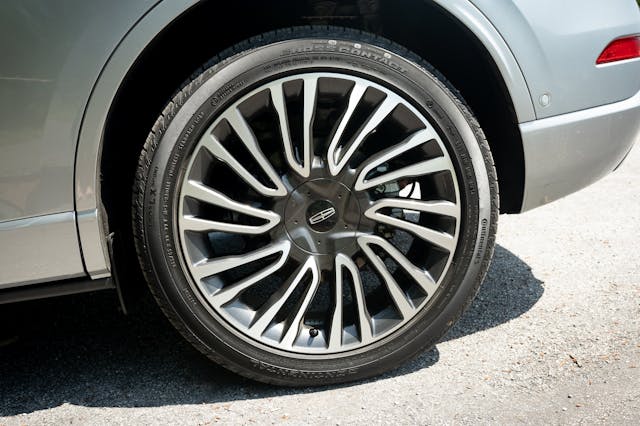
The suspension strolls down the road, disconnected. Imagine trying to run with each shoe a waterbed. Ride quality varies with drive mode; in the Lincoln’s softer settings, at low speed, the Corsair recalls an old Town Car with a dash of Mercedes-Benz: Small bumps and light pavement undulations seem to disappear. You roam cities amazed, looking for things to drive over. On the other hand, large body motions can take a nauseating amount of time to settle, as if the shocks were asleep. The Lincoln’s suspension is adaptive; switching to one of the more aggressive modes brings increased stiffness and greater driveline braking, but no change in philosophy.
The brakes are surprisingly grabby, with quick take-up, chauffeur stops difficult. The steering is wooden and synthetic; mode changes bring added weights and increased torque at the wheel but nothing like feel. On a back road, an old Town Car would be more fun and less unsettling.

Cars tell you how they want to be driven. The Lincoln’s concert of feedback and finish seem to suggest things will harmonize if you simply find the right rhythm. That turns out to be gliding around town somnambulant, doing nothing suddenly, zoning out.
Hush, the Corsair seems to be saying, we are going somewhere. Turn your brain off and feel those shift buttons.
Fine, you say: This is a Lincoln. Not a traditionally sporting brand. How much can you ask? And yet a certain amount of driver-hardware communication is necessary in any vehicle, to give confidence in the car’s abilities. The last Continental, dead since 2020, was far better at that job and lovable to boot. Lincoln can do this.
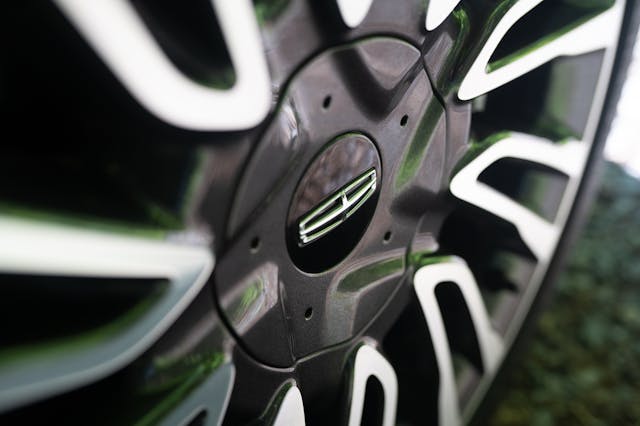
At the core, consumer product design is really just a series of forks in the road—chances to prioritize A over B, bent by engineering talent, budget, brand mission, and manufacturing ability. Countless decisions were made in the hope that purchasing this $50,000 vehicle would feel like rewarding yourself. And yet. There’s also the on-paper argument: Five figures on top of the base Corsair for just 28 miles of electric power and seven or eight miles per gallon is a tough pill to swallow. That’s a shame, as the intent here was clearly an efficient dose of luxury without an ounce of crassness. A rare combination. But the devil—or bovine—is in the details.
Moo, he said, as thoughtfully as possible. If only it didn’t feel so much like a shrug.
***
2021 Lincoln Corsair Hybrid
Price: $51,485 / $61,035 (base / as-tested; not reflective of 2022 pricing)
Highs: Wonderful seats, understated styling. Some details are quite satisfying. Great low-speed ride quality. One of just a few plug-in hybrid crossovers currently on sale. An adult offering.
Lows: Engine noise. Wooden and artificial steering. Interior details are, like the rest of the car, hit and miss. Big price bump over lesser Corsairs for not a lot of gain.
Takeaway: Expensive, especially for a machine based on the Ford Escape, but pleasant enough. Assuming you stick to EV power. On short journeys. Preferably in a straight line.
